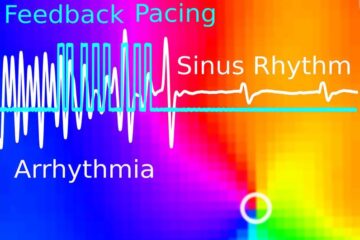New research could lead to a vaccine for pneumococcus disease

Pneumococcus is a bacterium which causes a lot of illness and disease in the very young and the elderly, including pneumonia and meningitis. Large numbers of pneumonia deaths occur in children every year especially in poor countries. Existing vaccines are not ideal for use in such countries and are also much too expensive.
Carriage of pneumococcus in the nose is a necessary first step for most infections. As children age, they carry pneumococcus for shorter periods of time and their risk of disease decreases also. The mechanisms underlying this age-related decrease of carriage are not well understood.
As part of a continuing collaboration between labs at the universities of Bristol and Harvard, researchers have shed new light on how the immune system detects and destroys the bug when it colonises the nose. The study is published in PLoS Pathogens.
American researchers led by Drs Richard Malley and Marc Lipsitch have produced evidence for a key role for the recently described cytokine interleukin 17 in a mouse model of the infection. The Bristol group led by Professor Adam Finn have shown that immune cells from children's tonsils, removed at surgery, also produce IL17 when stimulated with pneumococci.
The researchers have identified the immune cells that are responsible for this process, so-called TH17 cells, which release a factor that enables human blood cells to kill pneumococcus more efficiently. They have shown that these TH17 cells exist in adults and children, but not in newborn babies, which suggests that they may arise as a consequence of humans being exposed to pneumococcus.
Professor Finn said: “Understanding how children build up immunity to pneumococcus will help the development of effective affordable vaccines for use where they are most needed.”
In the past, immunity to pneumococcus was thought to be due entirely to antibodies. This new research suggests that other mechanisms may be very important too.
Media Contact
More Information:
http://www.bristol.ac.ukAll latest news from the category: Life Sciences and Chemistry
Articles and reports from the Life Sciences and chemistry area deal with applied and basic research into modern biology, chemistry and human medicine.
Valuable information can be found on a range of life sciences fields including bacteriology, biochemistry, bionics, bioinformatics, biophysics, biotechnology, genetics, geobotany, human biology, marine biology, microbiology, molecular biology, cellular biology, zoology, bioinorganic chemistry, microchemistry and environmental chemistry.
Newest articles

Wildfire danger to increase due to climate change
WSL Institute for Snow and Avalanche Research (SLF) researchers expect an elevated wildfire danger in the Alpine Foreland from 2040 onwards due to changing meteorological conditions. The danger currently remains…

Advanced Brain Science Without Coding Expertise
Researchers at Helmholtz Munich and the LMU University Hospital Munich introduce DELiVR, offering a new AI-based approach to the complex task of brain cell mapping. The deep learning tool democratizes…

Gentle defibrillation for the heart
Using light pulses as a model for electrical defibrillation, Göttingen scientists developed a method to assess and modulate the heart function. The research team from the Max Planck Institute for…





















